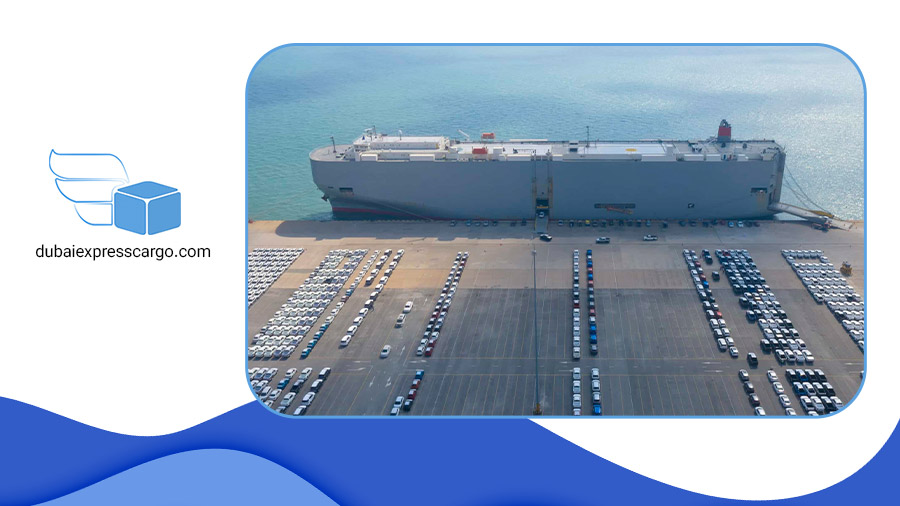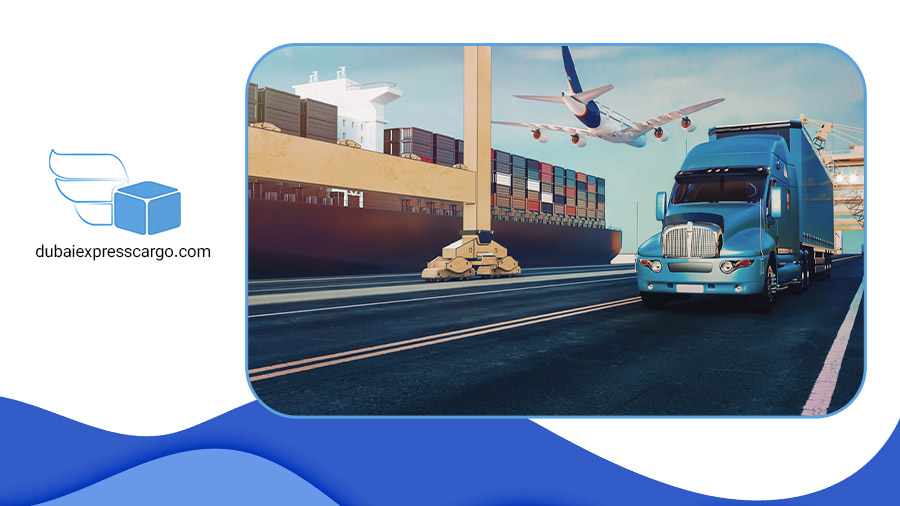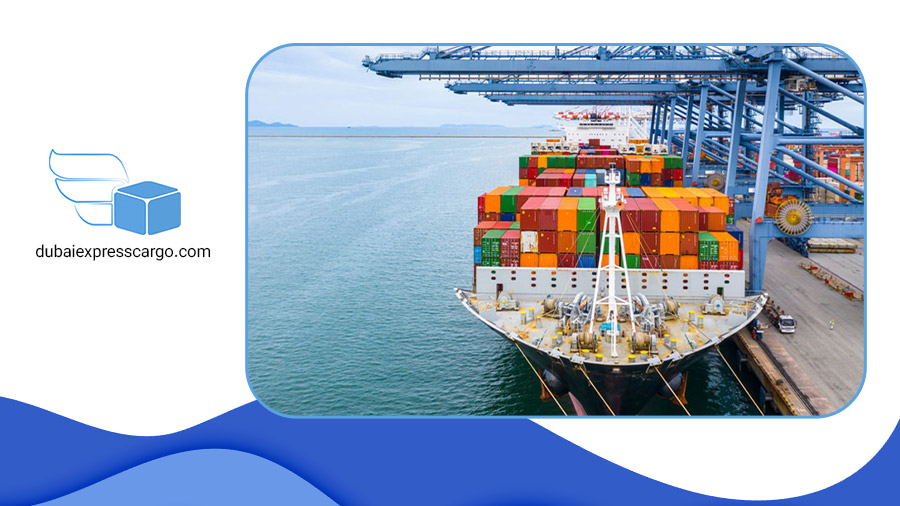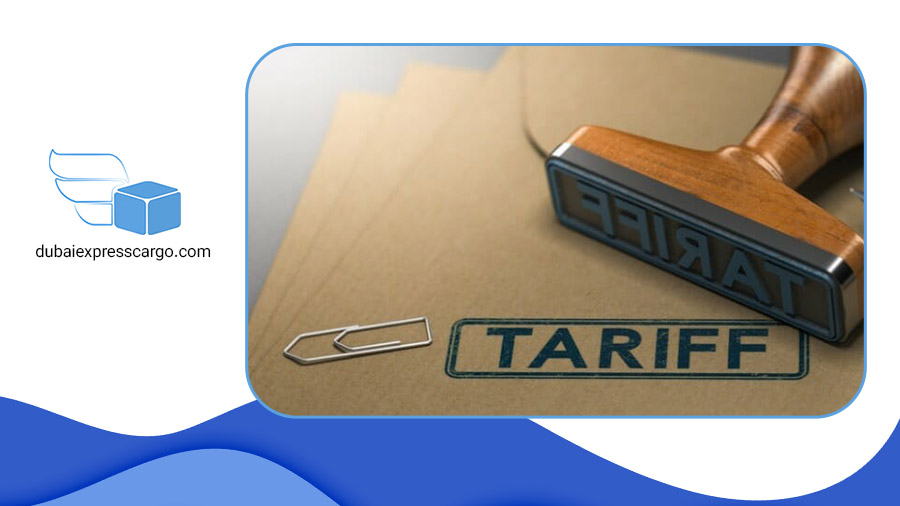The Cheapest Way to Ship to Qatar
In today’s globalized world, cost-effective shipping is vital in ensuring smooth and efficient trade operations, especially in a dynamic and thriving market like Qatar.
For individuals and businesses alike, finding the “Cheap Way to Ship to Qatar” is about saving money and unlocking this prosperous market’s immense potential. Qatar’s strategic location and growing demand for international products make it an attractive destination for both importers and exporters.
By understanding the intricacies of cost-effective shipping to Qatar, you can harness the full potential of this lucrative market, expand your reach, and boost your bottom line. Join us on this journey as we uncover the secrets to economical shipping solutions for Qatar.
Contents
Qatar Shipping Landscape
Qatar’s strategic location on the northeastern coast of the Arabian Peninsula has made it a vital player in international trade. This tiny yet affluent nation serves as a crucial gateway between the Middle East, Asia, Europe, and Africa, facilitating the exchange of goods across continents.
With its booming economy and rapid development, Qatar has witnessed a surge in demand for imported products, ranging from consumer goods to construction materials. However, navigating Qatar shipping has challenges, including stringent customs regulations, import duties, and unique logistical considerations.
Understanding these intricacies is essential for finding the most cost-effective shipping solutions to Qatar.
Let’s explore the strategies and options to help you overcome these challenges and tap into Qatar’s thriving market without breaking the bank.
- Related Article: DOOR TO DOOR SHIPPING FROM CHINA TO QATAR
Factors Influencing Shipping Costs to Qatar

Shipping costs to Qatar are influenced by several key factors, each of which can significantly impact your budget. To find the most cost-effective shipping solution, it’s essential to understand and optimize these factors.
1. Distance and Shipping Routes:
The distance your cargo needs to travel to Qatar is key in determining shipping costs. The longer the journey, the higher the expenses.
Additionally, the chosen shipping routes, whether through the Suez Canal or alternative paths, can affect both time and cost.
Optimizing route selection is crucial for affordability.
2. Weight and Dimensions of Cargo:
The weight and size of your cargo directly impact shipping costs. Heavier and bulkier items require more fuel, storage space, and handling, resulting in higher expenses.
Efficiently packing and consolidating goods can help reduce shipping costs.
3. Mode of Transportation (Air, Sea, Land):
The mode of transportation you select has a profound influence on shipping costs.
Air freight is typically the fastest but also the most expensive option.
Sea freight is cost-effective for larger shipments but can take longer.
Land transportation via trucks is suitable for regional trade but may not be efficient for long distances.
Choosing the right mode according to your cargo’s nature and urgency is critical for affordability.
4. Customs and Import Regulations:
Qatar has specific customs and import regulations that can affect shipping costs. These regulations include duties, taxes, and documentation requirements.
Non-compliance can lead to delays and additional expenses. Familiarizing yourself with Qatar’s customs procedures and ensuring accurate documentation is essential to avoid unnecessary costs.
Comparing Shipping Options

A. Sea Freight
Advantages of Sea Freight:
1. Cost Efficiency: Sea freight is often the most cost-effective option for shipping large quantities of goods to Qatar.
2. High Capacity: It can accommodate bulk shipments, making it suitable for industries like construction and manufacturing.
3. Environmental Friendliness: Compared to air freight, sea freight has a lower carbon footprint, aligning with sustainability goals.
4. Reliability: Sea routes are well-established, minimizing the risk of disruptions due to weather or congestion.
5. Economical for Non-urgent Cargo: Ideal for goods that aren’t time-sensitive, as transit times are longer than air freight.
Limitations of Sea Freight:
1. Slow Transit: To reach Qatar, sea freight takes longer than air or land options.
2. Weather-Related Delays: Storms or adverse weather conditions can lead to delays.
3. Port Congestion: Congestion at busy ports can cause delays and increased handling costs.
4. Limited Accessibility: Landlocked areas may face challenges accessing seaports.
5. Additional Costs: Fees like demurrage and detention may apply if cargo isn’t cleared or picked up promptly.
Tips for Cost-effective Sea Freight to Qatar:
1. Plan Ahead: Booking well in advance can secure lower rates and ensure timely deliveries.
2. Optimize Packaging: Efficient packing and container utilization reduce shipping costs.
3. Consolidation: Combine shipments with other cargo to share container costs.
4. Choose Less Busy Ports: Selecting less congested ports can reduce delays and fees.
5. Use Intermodal Transportation: Combine sea freight with land transport for flexibility and efficiency.
B. Air Freight
Advantages of Air Freight:
1. Speed: Air freight to Qatar is the fastest option, suitable for time-sensitive shipments.
2. Global Reach: Airlines connect major cities worldwide, providing extensive accessibility.
3. Reliability: Consistent flight schedules minimize transit time variability.
4. High Security: Stringent security measures enhance cargo safety during transit.
5. Reduced Inventory Costs: Faster transit times can lower inventory holding costs.
Limitations of Air Freight:
1. Higher Cost: Air freight is generally more expensive, especially for large or heavy cargo.
2. Limited Capacity: Smaller cargo holds limit the volume of goods that can be shipped.
3. Environmental Impact: Air transport has a higher carbon footprint than sea or land options.
4. Restricted Cargo: Hazardous or oversized items may not be eligible for air transport.
5. Customs Delays: Stringent security and customs procedures can lead to delays.
Tips for Cost-effective Air Freight to Qatar:
1. Use for Urgent Shipments: Reserve air freight for high-value or time-sensitive cargo.
2. Consolidate Shipments: Combine multiple smaller shipments to maximize cost efficiency.
3. Negotiate Rates: Negotiate with airlines for competitive rates, especially regular shipments.
4. Optimize Packaging: Efficient packing reduces dimensional weight charges.
5. Advance Documentation: Ensure all necessary paperwork is prepared to expedite customs clearance.
C. Land Freight
Advantages of Land Freight:
1. Regional Connectivity: Ideal for shipping to Qatar’s neighbouring countries like Saudi Arabia and the UAE.
2. Cost-effective for Short Distances: Cost-efficient for overland routes within the Gulf Cooperation Council (GCC).
3. Customs Efficiency: Generally quicker customs clearance than sea and air transport.
4. Security: Reduced risk of theft or damage compared to sea or air freight.
5. Flexibility: Suitable for various types of cargo, including perishable goods.
Limitations of Land Freight:
1. Limited International Reach: Land freight is less practical for long-distance international shipping.
2. Infrastructure Challenges: Road conditions and border crossings can be unpredictable.
3. Time-consuming: Longer transit times compared to air freight for distant destinations.
4. Border Delays: Customs checks at borders can result in delays.
5. Dependence on Road Network: Vulnerable to road closures or congestion.
Tips for Cost-effective Land Freight to Qatar
1. Choose Regional Shipping: Opt for land freight when shipping within the GCC region.
2. Collaborate with Local Carriers: Partner with local carriers for cost-effective solutions.
3. Plan Efficient Routes: Research and select the most efficient road routes.
4. Leverage Technology: Use tracking and logistics software for real-time monitoring.
5. Customs Compliance: Ensure all customs requirements are met to prevent delays and fines.
Shipping Companies and Service Providers

Choosing the right shipping company is crucial for cost-effective shipping to Qatar. Here’s how to make an informed decision:
1. Background Check: Research the company’s reputation, reviews, and track record in handling shipments to Qatar.
2. Licensing and Certification: Ensure the company is licensed and accredited by relevant authorities, indicating professionalism and compliance.
3. Experience with Qatar: Prior experience in shipping to Qatar is advantageous, as it reflects familiarity with local regulations and challenges.
4. Network and Partnerships: Check if the company has a strong network and partnerships for smooth transit to Qatar.
5. Customer Support: Assess their customer support quality; responsive and helpful support can prevent and resolve issues.
6. References: Ask for references from past clients to gauge their satisfaction levels.
7. Services Offered: Ensure the services align with your cargo’s needs, including handling specific goods.
To secure cost-effective shipping rates to Qatar and favorable terms, effective negotiation is key:
1. Compare Multiple Quotes: Request quotes from different shipping companies to compare rates and services.
2. Volume Discounts: Inquire about discounts for regular or large shipments to Qatar.
3. Contract Terms: Review contract terms carefully, paying attention to fees, insurance, and liability clauses.
4. Customized Solutions: Negotiate for tailored solutions that suit your cargo and budget.
5. Payment Terms: Discuss flexible payment terms that align with your cash flow.
6. Delivery Timeframes: Ensure agreed-upon delivery timeframes meet your requirements.
7. Insurance Coverage: Understand the insurance coverage provided and consider additional coverage if needed.
8. Penalties and Discounts: Clarify penalties for delays and any discounts for early or prompt payment.
By conducting thorough research and engaging in effective negotiations, you can find a reliable shipping partner that offers competitive rates and meets your specific shipping needs when sending cargo to Qatar.
Packaging and Consolidation

Efficient packaging is essential for cost-effective shipping to Qatar. Here’s how it can help you save:
1. Size and Weight Optimization: Use appropriately sized packaging to minimize dimensional weight charges and avoid excess weight.
2. Durable Materials: Select sturdy materials to protect your cargo and prevent damage during transit.
3. Inner Cushioning: Use cushioning materials like bubble wrap or foam to safeguard fragile items.
4. Consolidation: Combine multiple small packages into one larger one to reduce handling and shipping costs.
5. Minimize Empty Space: Fill empty package spaces to prevent shifting and maximize container space.
6. Labeling and Documentation: Clearly label packages and provide accurate documentation to expedite customs clearance.
7. Environmentally Friendly: Consider eco-friendly packaging options to reduce waste and contribute to sustainability efforts.
- Related Article: THE CHEAPEST WAY OF SHIPPING LARGE PACKAGES
Cargo consolidation offers several advantages when shipping to Qatar:
1. Cost Savings: Combining shipments reduces the cost per unit, making it more affordable.
2. Reduced Handling: Fewer packages mean less handling, reducing the risk of damage.
3. Optimized Container Space: Efficient container space utilization maximizes cargo capacity.
4. Streamlined Customs: Consolidation simplifies customs clearance, saving time and effort.
5. Lower Carbon Footprint: Fewer shipments reduce environmental impact, aligning with sustainability goals.
6. Faster Transit: Consolidated shipments may be prioritized, leading to quicker deliveries.
7. Improved Tracking: Tracking a single consolidated shipment is easier than multiple individual ones.

Navigating Qatar’s customs regulations is essential to ensure smooth shipping:
1. Documentation: Prepare accurate and complete paperwork, including invoices and permits.
2. Restricted Items: Familiarize yourself with items restricted or prohibited for import into Qatar.
3. Duty Rates: Understand the duty rates applicable to your goods, as they vary by product type.
4. Valuation Rules: Follow Qatar’s valuation rules to determine the customs value of your cargo.
5. Customs Declarations: Submit truthful and detailed customs declarations to avoid penalties.
Minimizing customs and import duties can help reduce shipping costs:
1. Tariff Classification: Ensure your goods are classified correctly to benefit from lower duty rates.
2. Free Trade Agreements: Explore if your country has a trade agreement with Qatar for potential duty exemptions.
3. Duty Drawback Programs: Investigate if Qatar offers duty drawback programs for specific goods.
4. Valuation Adjustments: Use legal methods to reduce the customs value, such as excluding certain costs.
5. Temporary Entry: Utilize temporary entry programs for goods not intended for permanent use in Qatar.
6. Customs Consultants: Seek guidance from customs experts or consultants for duty minimization strategies.
7. Exemptions and Incentives: Research any exemptions or incentives provided for certain industries or projects.
Tips for Saving on Shipping Costs to Qatar

Shipping costs are a significant factor in international trade. To ensure your shipments to Qatar are budget-friendly, consider these valuable tips:
1. Bulk Shipping and Volume Discounts:
When sending goods to Qatar, think in terms of bulk and volume discounts:
– Consolidate Shipments: Combine multiple smaller shipments into a single larger one. This not only reduces shipping costs but also minimizes handling and paperwork.
– Negotiate Volume Discounts: Work with your shipping provider to secure volume discounts for regular or larger shipments. Building a long-term relationship can lead to cost savings.
– Use Standardized Packaging: Utilize standardized packaging sizes to maximize container space and minimize shipping costs based on dimensions and weight.
2. Timing and Scheduling Considerations:
Carefully plan the timing of your shipments to optimize costs:
– Off-Peak Shipping: Explore the possibility of scheduling shipments during off-peak seasons or days when demand is lower. This can lead to lower rates and fewer delays.
– Advance Booking: Book your shipments well in advance. This ensures availability and allows you to lock in lower rates.
– Consistent Scheduling: If you have regular shipments to Qatar, maintain a consistent schedule. Shipping providers may offer better rates for ongoing business.
– Flexible Delivery Times: Be open to flexible delivery times to benefit from lower-cost options, especially if time sensitivity is not a primary concern.
3. Documentation and Paperwork:
Proper documentation and paperwork are crucial for efficient and cost-effective shipping:
– Accurate Customs Declarations: Ensure all customs declarations are accurate and complete. Errors or omissions can lead to delays and additional costs.
– Electronic Documentation: Whenever possible, opt for electronic documentation and communication. This streamlines processes and reduces paperwork-related expenses.
– Documentation Preparation: Prepare all required documents well in advance of the shipment’s departure. This includes invoices, certificates of origin, and any special permits.
– Compliance with Regulations: Stay up-to-date with Qatar’s customs and import regulations to avoid fines or additional costs due to non-compliance.
– Digital Tracking and Management: Use digital tools and software to track and manage your shipments. This enhances visibility and ensures timely document submission.
Conclusion
In international trade, the significance of cost-effective shipping, such as the services offered by Dubai Express Cargo, cannot be overstated.
Finding the most economical way to ship to Qatar is not merely about saving money; it’s about unlocking new opportunities in a thriving market.
As we conclude, remember that every saved dollar in shipping costs contributes to your competitive edge, allowing you to expand, succeed, and thrive in the global business landscape.
Cost-effective shipping is your passport to growth and a journey worth embarking upon.




Leave a Reply
Want to join the discussion?Feel free to contribute!